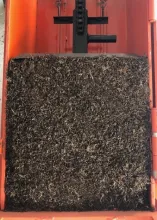SeaSINC will address critical knowledge gaps in our understanding of the effects of sinking seaweed on deep marine environments and ecosystems by conducting the first controlled, small-scale pilot study in the Caribbean. Specifically, the project will establish if, and how, the deposition of sargassum onto the seafloor affects microbial, meio-, macro- and megafaunal communities and/or biogeochemical processes in the surrounding sediments and water column.
Data generated through this study will fundamentally improve our understanding of the rate of Sargassum seaweed decomposition in deep marine environments, and the extent to which it may affect biogeochemical processes and ecosystem functioning. In doing so the project will help inform and evaluate the viability of seaweed sinking as a mCDR strategy, as well as its associated benefits and consequences.














